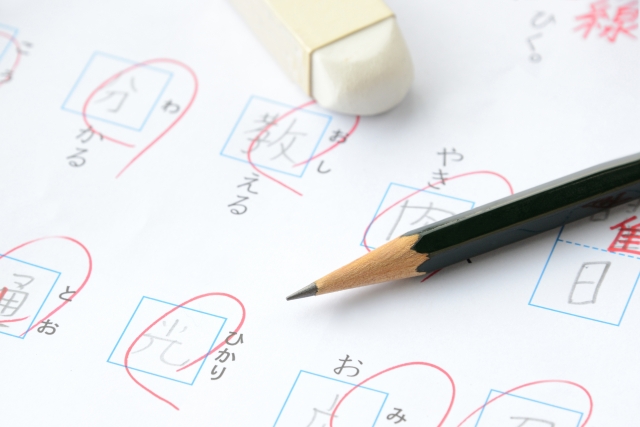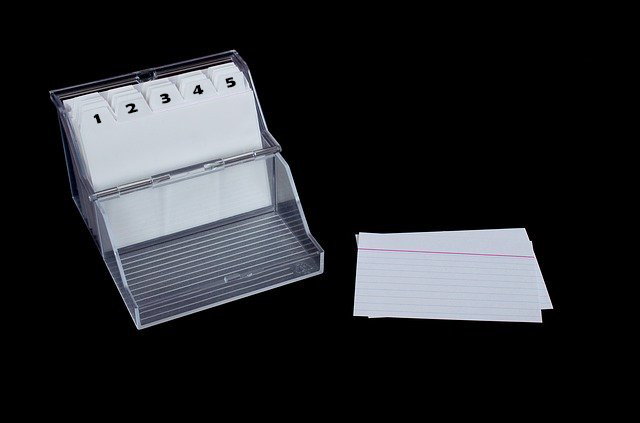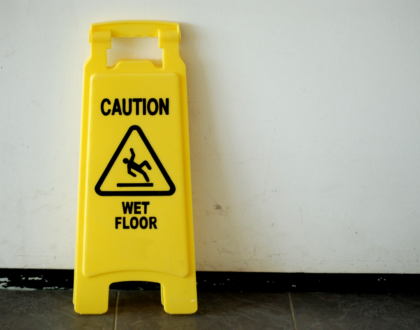Remembering Kanji – Four Methods Compared

by Florian
Kanji are the most dreaded field of Japanese study for many. But with a bit of creativity, the right tools, and a systematic approach, mastering them is easier than you think. Read on to find out!
コンテンツ
The problem with learning Kanji
For many Japanese learners, kanji are probably both the most fascinating and (at the same time) most frustrating thing about the language they’re studying. I remember being entranced by them myself, a long time ago. That mystery, that elegance!
If you’re learning Japanese to be able to talk to friends or even strangers on a holiday trip, you don’t really need to bother with kanji and can just treat them as pretty lines on paper. But if you want to live in Japan long-term or even work here, knowledge of them becomes absolutely crucial to master the language. And the longer you put kanji practice off, the harder it becomes to start…
However, once you HAVE to learn them, they can overwhelm you very quickly. First of all, there’s the raw quantity they come in. The current list of joyo kanji (“commonly used kanji”) includes 2,136 individual characters. When you’re starting out, that number seems insurmountable. How on earth are you supposed to remember all those strokes and shapes?
This article, based on my own experiences as a former kanji-learner, shows you methods which help you to break down kanji into their components and make sense of their complexity.
How to study Kanji
There are many ways to study kanji, but broadly, they can be divided into two categories: The “pure repetition” approach and the “mnemonics” approach.
Pure repetition
This is just what it says on the label. First, you get a list of kanji to study. Next, you write the first kanji on that list. Then you write it again. And again. And again. And again. You continue writing until the image of the kanji has been burned into your mind. Then you move on to the next one. Rinse and repeat.
This method is, first and foremost, used by Japanese children in school. Well, to be fair – it’s used by their teachers, really. But it works for them. Why? Well, for one, they are native speakers. All they have to do is to remember a symbol that matches a word they already know.
Of course, they still don’t know a lot of words. But for them, there are no extra layers like there are for foreign learners. It’s not “word + meaning in my native language + context + symbol”, it’s just “word + symbol”. The meaning and the context in which the word is used are just naturally absorbed. After all, Japanese children are surrounded by Japanese writing wherever they go. All this helps to remedy some of the “pure repetition” method’s downsides.
Last but not least, Japanese children are just very young when they start learning kanji. Let’s say you want to start studying right now, at this very moment. “Just fill me up with kanji, right up to the brim!”, you say. Well, that’s great. But are you 6 years old? No? I thought so.
Don’t get me wrong, I’m not saying that you shouldn’t include some amount of repetition into your studies. It’s very important when starting out. Even later you need to repeat to make sure you really remember what you learned. But studying 2000+ kanji as a non-Japanese, non-grade school person by relying on rote repetition ONLY? I strongly advise against that.
Mnemonics
A mnemonic (also called a memory device) is a set of ideas and associations that helps you remember things. You arrange these ideas in a pattern or story that leads you to the thing you want to recall.
An easy example I remember from my time in school is this phrase from English class: “He, she, it the ‘s’ must fit.” This mnemonic uses a rhyme pattern to remind English learners that they have to put an ‘s’ at the end of verbs in the third person singular (“he eats”, “she climbs”, etc).
Mnemonics are good for studying kanji because most of them can be broken down into parts. A kanji like 繋 looks very complicated at first glance. But in fact, it’s comprised of 車, 殳, and 糸. If you remember these parts and their meanings with a mnemonic, recognizing and even hand-writing 繋 becomes pretty easy.
Even without knowing any specific method, you can try this out. Look at the JapanDict entry for 繋 and scroll down. There, you see the so-called “radicals” the kanji is composed of. 車 is “car”, 殳 is “halberd” and 糸 is “thread”. The meaning for the whole kanji is “tie, fasten”.
A simple mnemonic for this could be “Using some THREAD, Bob TIED a HALBERD to his CAR.” You could also arrange the radicals in the order they appear in the kanji (top to bottom, left to right) with something like this: “There once was a very angry man who hated to get stuck in traffic with his CAR. So he TIED a HALBERD to it with some THREAD to make people move out of his way.”
車, 殳 and 糸 show up in many other kanji too, so if you do it right, your learning curve should shoot up at some point.
The key to making a good mnemonic is to make sure the associations you choose are something close to you or at least have no trouble imagining. The goal is to create something memorable, after all.
That’s the reason why “crazy mnemonics” (where the parts have nothing to do at all with what you’re trying to recall or are connected in a way that no “normal person” would connect them in) work better than you’d expect. Basically, they end up sounding so stupid, funny or outrageous that you can’t help but remember them.
The reason why I recommend this approach over the repetition one is that it’s more suited to “grown-ups”. Children have the amazing ability to absorb things naturally, but their lifetime memory storage is still pretty small. Also, while they CAN remember things with mnemonics, using a whole complex system of them is pretty hard for them. For adults, it’s the opposite.
One last remark: Mnemonics are a temporary thing. It’s like when you learn how to type and remember that the “G” key is right to the “F” key (which has a little knob on it). At first, whenever you’re not sure, you’re going to search for the “F” key and then move right from there, which takes you where you want to go. Eventually though, you will be able to just hit the “G” key right away, without looking or feeling around on the keyboard.
In the same way, mnemonics are intended to be used as a crutch that will be naturally discarded later. If you walk along the same path inside of your mind often enough, eventually the time will come where you don’t have to think about the path anymore – you just take it (this is starting to sound a bit Star Wars-y, so I’m going to stop here).
The Spaced Repetition method
Learning is one thing, but as with everything else, you have to review what you studied to truly retain it. Like many other Japanese learners, I’d recommend using Anki when it comes to remembering kanji and vocabulary. But first, let me explain how the system behind Anki works.
Even if you’ve never heard of the Leitner system, chances are you’ve encountered it in some shape or form in your life. I remember using it to study English and Latin vocabulary in middle in high school (I didn’t bother with French, although nowadays I wish that I had…).
In the Leitner system, you use paper flashcards and a box. That box is separated into multiple segments, usually four to five. Whenever you review a card and get the answer right, you move the card back one segment (or put it in the first one if you’re seeing it for the first time). The farther in the back a card is, the less often you review it. If you get the answer wrong though, you move the card one segment to the front.
This setup ensures that you’re not studying everything all the time, but only the things you are struggling to remember and those that you are about to forget. By testing your brain at different time intervals, the system makes sure that the stuff you learn slowly enters your long-term memory.
Tools like Anki (and HouHou) apply this cards-and-box system in a digital format. This comes with multiple benefits. For one, you don’t have to keep track of the time intervals yourself – the software does that for you. But most importantly, because you can sync them with your phone, these tools allow you to take even huge flashcard decks anywhere you go.
Ways to learn the Kanji
Below, you can find a list of popular methods to study kanji. All of them use the mnemonics approach but do so in slightly different ways (e.g. different kanji order, different kinds of mnemonics, etc.).
James Heisig’s “Remembering the Kanji”
This method is like an old car that runs very reliably but has no extra features – not even a radio.
The book “Remembering the Kanji” (often abbreviated as RTK) was first published in 1977. That makes the method based on it the oldest study option on this list. RTK follows the basic mnemonic principle. It breaks down the kanji into parts and encourages the learner to remember the symbols with the help of stories.
One of the good things about this method is that it forces you to create your own stories. In the beginning, there’s a pre-made story for every new kanji, but over time, they show up less and less. In the end, you’re just given the story components and have to make up something memorable for yourself. This means some extra effort, but also a stronger mental connection if you do it right.
The most remarkable thing about this book, however, is how fast you can get through it. In the foreword, Heisig claims that with “full-time study” (i.e. doing nothing else than learning kanji), his book can be completed in four to six weeks – with all the intended results. Even if you go a little slower and set yourself the goal of three to four months, that’s still pretty short if you consider you’re learning 2,000 kanji in total.
There’s a catch though. Using Heisig’s method, you won’t learn Japanese vocabulary, and not any pronunciation either. It exclusively focuses on the shape of the kanji and their meanings. Heisig says you should get that down first before you even think about moving on to the other stuff the language has to offer. It’s very much a “wax on, wax off”-approach to Japanese practice.
If you’re 100% clear that your future lies in Japan, that may not seem so bad. However, the main reason to learn a language is to ultimately USE IT. Just looking at symbols all day, every day without a clear image of how all that knowledge you’re accumulating will help you with can be demotivating.
Full disclosure: I studied kanji using the Heisig method. By that time I had already spent one year in Japan, albeit with next to no Japanese skills. Back at home, I was living in a town where I had no opportunity to speak Japanese with anyone anyway, so I decided I might as well do it.
Against Heisig’s advice, I coupled kanji study with vocabulary practice and didn’t go through the whole book, down to the last page. Somewhere in the last fourth, I got the feeling that I kind of “got it” and didn’t have to create a story for every kanji anymore.
For me, it worked. Now, I don’t know any of the stories anymore, but the kanji and their meanings were completely fixed into my mind. I remember being proud of the self-made “kanji study progress” graphic that I uploaded to my Facebook.
PRO
✔ Potentially very fast
✔ Encourages creation of own mnemonics (= better retention)
CON
✖ No pronunciation or vocabulary, only meanings
Wanikani
If you were to compare this method to a car, it would be an automatic car with cruise control.
Wanikani is the kanji learning web application provided by Tofugu. It claims that by using it, you can learn 2,000 kanji and 6,000 vocabulary words in “just over a year” . WaniKani was launched in 2012 and has been able to maintain a stable user base as well as an active community of learners.
The main draw of this option is probably its comfortableness. There’s no need to make or download or configure Anki decks, make your own flashcards, or do any other preparation. You just register and start learning. The app will handle everything else for you.
In contrast to RTK, WaniKani teaches both kanji AND vocabulary. Mnemonics are provided all the way to the end, which doesn’t make it necessary to come up with own stories. The (Japanese) readings are included in the mnemonics as well. This is certainly a comfortable feature, although you could argue that just copying existing mnemonics reduces effectiveness.
The study process is broken up into 60 levels. Normal levels take about 7 days to complete, but there are also shorter (“fast”) levels that can be completed in about 4. While it may be technically possible to finish all 60 levels in about one year, most users seem to take longer (around two years).
Each level starts with lessons that teach the user new radicals, the kanji they appear in, and vocabulary words that include those kanji. After the lessons, there is a quiz. Getting the answers right will unlock new vocabulary and progress within the level. Kanji and vocabulary will keep showing up during review time until they reach the status “burned”.
Now on to the cons: First of all, WaniKani costs money. You can choose between a $9 monthly subscription, an $89 annual subscription or a $299 lifetime subscription. Unless you pay for the lifetime subscription, you will only be able to use the app for as long as you keep paying each month or year. For the lifetime subscription, there are annual Christmas discounts which bring it down to about $199.
Also, with WaniKani, you have little control over what you learn. The radicals, kanji and vocabulary words are pre-defined and you can’t choose to learn more than the app asks of you at any given point. Especially if you already know some kanji, this can make the beginning pretty tedious.
PRO:
✔ Neat “all-inclusive” package
✔ Teaches kanji, vocabulary, and readings
✔ Active Community
CON
✖ Can be slow
✖ Subscription service
✖ Little control over study material
Kanjidamage
Kanjidamage is like a car that’s kind of run-down and shabby, but also kind of lovable. Plus, you got it for free from your buddy.
At the risk of simplifying a bit too much, I’d say that Kanjidamage is a free and more … urban (I guess?) version of WaniKani and RTK. The latter probably comes across better if I just tell you that it advertises its method as one “where you can learn 1,700 kanji using Yo Mama jokes”.
It doesn’t have its own web application, professional-looking UI or gamified level system, but the essential things are all there. Just like WaniKani, Kanjidamage teaches you radicals and kanji in a certain order and supplies mnemonics for meanings and readings. The vocabulary it teaches with each kanji comes with a usefulness ranking (giving you an idea of how often you’ll encounter it “in the wild”).
As already mentioned above, the tone of the website (and, in turn, the mnemonics) is a lot more casual than all the other methods. You could even say that it’s NSFW (not safe for work, i.e. don’t use it around people that expect you to ‘behave properly’).
Probably the biggest downside aside from the tone is that the site is not updated anymore. The person who created the method has apparently erased their whole internet presence (except for Kanjidamage, of course), so there’s no way to contact them to clear up questions. There is, however, a moderately active forum page with a community that can help you along.
I should also mention that this method teaches less kanji than the others, topping out at a total of 1,700. Around 500 kanji were omitted because they were “too obscure” or “useless” by the creator of the method.
Personally, I think that by the time you reach the 1,500 mark, you shouldn’t have too much trouble remembering new kanji without relying on mnemonics (especially if you study vocabulary on the side). From my perspective it’s not a big sticking point, but if you want the “full course” no matter what, you have to choose another option.
PRO
✔ Completely free
✔ Comes with pre-made Anki deck
✔ Features mnemonics, readings, and vocabulary
✔ Not as dry as the other options
CON
✖ Tone is not for everyone
✖ Not updated anymore
✖ Only 1,700 kanji
The Kodansha Learner’s Course
This final option is like a special version of a pretty common car that hasn’t gotten reproduced ever for some mysterious reason.
This 2013 book teaches you 2,300 kanji as well as related vocabulary. You could call it a non-digital version of WaniKani or Kanjidamage, although it doesn’t offer mnemonics for readings like the other two do. The fact that it’s a release from one of Japan’s biggest publishing houses (Kodansha) makes sure that everything you read has been properly checked by experts in their field.
Because this method comes in the form of a physical book, normally you would have to make your own flashcards. However, it turns out that someone already did all the work and shared it on AnkiWeb. The deck contains all 2,300 kanji and the associated vocabulary words for review.
Sounds great, right? After reading about it, I wanted to check it out too, just out of curiosity. But the thing is … you can’t find it anywhere. It’s weird.
No matter where you look – Amazon, personal blogs and websites, Goodreads – almost everyone who has used it seems to love this book. And yet, it was only printed once and has gone completely out of print. If you want to get a physical copy, you have to buy it second hand, where it can easily cost you $300 and up.
PRO
✔ Great ratings
✔ Teaches kanji and vocabulary
✔ Good for people that prefer to learn with physical media
CON
✖ Completely out of print
✖ Ridiculously expensive second-hand
How to remember
So, what method should you use? I’m sorry, but I can’t help you with this – you have to decide yourself. However, what I can say that it’s not useful to wait for too long. Before I started going through “Remembering the Kanji”, I too searched around the web if the method I was considering was effective and would yield “the best” results.
After reading a lot of differing opinions, I got frustrated. Everyone was saying something else! What was I supposed to do? In the end, I stopped looking around for the optimal choice, just picked one and started learning.
The biggest thing you’ll have to consider is how much time you want to (or can) invest in learning kanji. If you want to go “hermit mode” and clear away the confusion as fast as possible, I’d recommend Heisig. If you want a more balanced approach, one of the other options would probably be better.
However, in the end, I think what method you choose doesn’t really matter. They all can lead to good results. What matters most is tenacity – once you start, try your hardest to overcome laziness and always keep going. It may be hard at times, but if you want to live in Japan, that approach alone will take you a long way.
You want to work in Japan?
Learning on your own is one way to do things, but with professional help, things go a lot smoother. Linguage Japanese Language School, right next to Shinjuku station in the heart of Tokyo, specializes in language education optimized for job hunting – the fast track from beginner level to a job in Japan! Find out more in our article here or click the button below to directly go to the school’s homepage.
Linguage Japanese Language School





